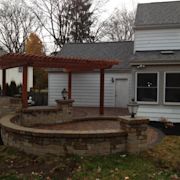Search results
Everything you need to know about how to start a garden, including information on soil, composting, mulch, irrigation, pests, diseases, flower and vegetable gardens, garden DIYs, and more. Advice for beginners and pros alike.
Mar 23, 2024 · Learn how to choose the best location, vegetables, and growing tips for your first vegetable garden. Find out why gardening is beneficial, how to protect your plants from wildlife, and when to plant warm and cool season crops.
- Mary Marlowe Leverette
- Pick the Right Location. Picking a good location for your garden is absolutely key. A subpar location can result in subpar veggies! Here are a few tips for choosing a good site
- Choosing a Plot Size: Start Small! Remember: It’s better to be proud of a small garden than be frustrated by a big one! One of the most common errors beginners make is planting too much too soon—way more than anybody could ever eat or want!
- Choosing Vegetables. As a beginner, start by choosing easy vegetables that are also productive. We’ve listed some of the easiest vegetables for beginners below.
- Where and When to Plant. This process is easy if you are simply growing two or three tomato plants. But if you plan to grow a full garden, you need to consider
- 41 sec
- Know your USDA Hardiness Zone. Use it as a guide so you don't plant trees, shrubs, and perennials that won't survive winters in your area. You'll also get a better idea of when to expect your last frost date in spring so you know when you can plant vegetables, fruits, and annuals outside in your area.
- Not sure when to prune? Prune spring-flowering shrubs, such as lilacs, and large-flower climbing roses immediately after the blooms fade. They set their flower buds in autumn on last year's growth.
- Apply only composted, rotted manure that has cured for at least six months to your soil. Fresh manure is too high in nitrogen and can "burn" plants; it may also contain pathogens or parasites.
- Perennials generally need three years after you plant them to achieve their mature size. Remember the adage that they "sleep, creep, and leap" each year respectively.
- Consider What to Plant. Do you want to plant a vegetable garden? An herb garden? A flower garden? If you choose vegetables and herbs for their contributions to your dinner table, plant ones your family will eat or be willing to try.
- Pick the Best Garden Spot. Almost all vegetables and many types of flowering plants need 6-8 hours of full sun each day. So you need to observe your yard throughout the day to figure out which spots receive full sun versus partial or full shade.
- Clear the Ground. Get rid of weeds and sod in the area you plan to plant. If you want quick results—for example, if it's already spring and you want veggies this summer—cut it out.
- Test and Improve Your Soil. To learn more about your soil, have a soil test done through your cooperative extension office. They'll lead you through the procedure: How much soil to send from which parts of the garden and the best time to obtain samples.
Find out how to grow big this season with raised bed gardening, flowering perennials, drought-tolerant plants, and more. Shop for garden essentials, premium seeds, and popular grow guides from Epic Gardening.
Find inspiration and advice for growing your best garden ever with HGTV. Explore topics such as garden types, flowers, vegetables, pests, tools and more.






